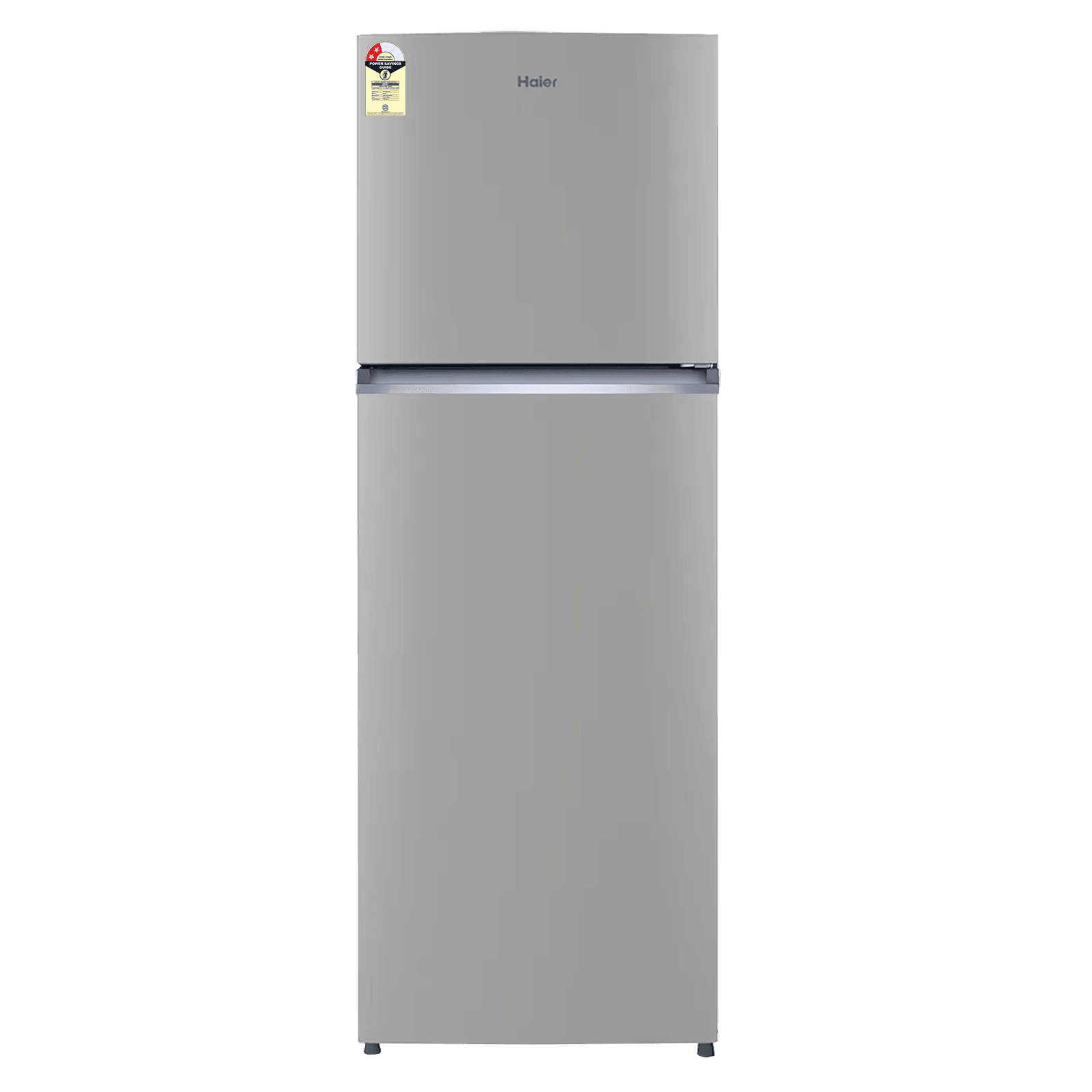
Home Appliances
•05 min read

Buy SAMSUNG Stylish Grande 223 Litres3 Star Direct Cool Single Door Refrigerator with Base Stand Drawer (RR24C2Z23CR/NL, Camellia Purple) online at best prices from Croma. Check product details, reviews & more. Shop now!
Ever stood in front of a refrigerator aisle, overwhelmed by the sheer variety of sizes and styles? Choosing the right refrigerator capacity is crucial for ensuring your kitchen works efficiently and fits perfectly into your daily life. In this guide, you'll learn how to determine the ideal refrigerator capacity tailored to your needs, lifestyle, and kitchen space. We will explore various fridge types, share tips on calculation, and offer advice on optimizing the storage space, all while keeping energy efficiency in mind.
Refrigerator capacity is measured in cubic feet or litres and represents the total internal storage space available for your food and beverages. It covers both the fridge and freezer sections, though not all of this space is always usable. Knowing the difference between total capacity and usable space is key to ensuring you have enough room without wasting energy.
An incorrectly sized refrigerator can lead to problems such as wasted energy, inadequate food storage and a kitchen that feels cramped or cluttered. Underestimating your needs may result in constant reorganization and missed storage opportunities, while overestimating can cause higher electricity bills and inefficient use of space. Ensuring your appliance matches your household and kitchen layout ultimately provides convenience and supports long-term energy efficiency.
Your household size plays an essential role in determining the appropriate fridge size. For 1-2 people, compact fridge options usually suffice, providing efficient storage without overwhelming your kitchen space. For 3-4 people, a medium to large capacity refrigerator strikes a balance between storage space and usable design. Households with 5 or more people might require large capacity refrigerators or even additional freezer units. Lifestyle factors are equally important; if you are big on meal prepping or frequently host parties, you might need a fridge with more space to accommodate your busy schedule.
When choosing a refrigerator, always measure your kitchen space carefully. Note the width, height, and depth of your chosen spot to ensure the appliance will fit comfortably without hindering movement or blocking ventilation. Small kitchen fridge solutions provide smart designs for compact areas, making it possible to enjoy a fully functional refrigerator even in limited spaces. Additionally, be sure to consider ventilation space and door clearance to ensure smooth operation.
Energy-efficient refrigerators are not only good for the environment, but they also help you save money in the long run. Look for models that boast high ENERGY STAR ratings, as these ratings indicate lower operating costs and better performance. Selecting an energy-efficient refrigerator is a win-win approach, balancing great refrigerator capacity with sustainability and cost savings.

Buy Haier HRF-2902 240 Litres 2 Star Frost Free Double Door Refrigerator with Stabilizer Free Operation (HRF-2902IEBS-P, Brushline Silver) online at best prices from Croma. Check product details, reviews & more. Shop now!
The debate between top freezer and bottom freezer models continues among households. Top freezer models generally offer a bit more fridge space, making them ideal for those who store more fresh produce and beverages. In contrast, bottom freezer models often provide easier access to fresh items and prioritise freezer storage, making them ideal for households that frequently store frozen goods. Understanding these differences can help you choose the type that aligns best with your storage needs.
Each refrigerator style offers a unique set of storage capacities and layouts. French door designs typically provide a spacious interior ideal for larger families or those who value stylish, user-friendly access. Side-by-side models offer balanced storage between the fridge and freezer and are designed for ease of use. For those with limited kitchen space, compact fridge options deliver essential storage without compromising on efficiency or style. Knowing the strengths of each type helps in selecting the best refrigerator for families with differing needs.
For dorms or office spaces, compact models offer innovative solutions that maximise storage in minimal space without sacrificing functionality. Conversely, households with extensive storage needs can explore large capacity refrigerators that accommodate bulk purchases and seasonal storage requirements. Each type brings its own set of advantages, ensuring there is a perfect match for every requirement.
Calculating your refrigerator capacity is simpler than it might seem. You can determine the capacity by measuring the interior width, height, and depth of the refrigerator in inches. Multiply these three dimensions together and then divide by 1,728 to convert the measurement into cubic feet. This calculation helps you estimate if a particular model meets your storage requirements efficiently.
If you prefer visual aids, a refrigerator capacity chart can simplify the process by matching your specific needs with available sizes. Simply locate your household configuration and desired storage capacity on the chart to narrow down your choices. This strategy proves especially helpful when searching online for a fridge size guide that fits your unique needs.
Pro Tip for Space Optimization
Did you know that placing taller items like milk cartons at the back and shorter items in the front can improve airflow and prevent overcrowding in your fridge? This simple trick can help your refrigerator run more efficiently and prolong food freshness.
The key to making the most of your refrigerator storage space is effective organization. Start by grouping similar items together and using bins, dividers, and adjustable shelves to maintain order. Organized shelves not only increase usable space but also make it easier to find what you need quickly during busy mornings.

Buy SAMSUNG Stylish Grande 183 Litres3 Star Direct Cool Single Door Refrigerator with Anti Bacterial Gasket (RR20C2Y23S8/HL, Elegant Inox) online at best prices from Croma. Check product details, reviews & more. Shop now!
Proper arrangement of food items can greatly contribute to maintaining freshness and reducing waste. For instance, storing fruits and vegetables in designated compartments and using containers to seal leftovers can extend the life of your produce. This approach not only keeps your food tasting fresh but also means you make the most of your energy-efficient refrigerators.
Consider utilising clear storage containers and labelling them by category. This method ensures that every inch of your refrigerator capacity is used wisely, making meal planning easier and daily routines less stressful.
The capacity of a standard refrigerator typically ranges between 18 and 25 cubic feet, depending on its style and design.
Refrigerator storage space refers to the available interior area where food and beverages are kept, measured in cubic feet or litres.
You calculate refrigerator capacity by multiplying the interior width, height, and depth in inches, then dividing by 1,728 to convert the total to cubic feet.
Compact fridge options or counter-depth models are ideal for small kitchens as they provide sufficient storage while occupying minimal space.
Top freezer models generally offer more space in the refrigerator section, whereas bottom freezer models prioritise freezer space and ease of access for fresh items.
Choosing the right refrigerator capacity involves balancing household size, lifestyle, kitchen space, and energy efficiency. By understanding your unique requirements and carefully evaluating the available options, you can make an informed investment that enhances your daily routine. Smart appliance decisions not only improve the functionality of your home but also unlock benefits like NeuCoins rewards and special opportunities available on our platform. With tips on optimising your refrigerator space and well-thought-out capacity calculations, you are now better prepared to select the best refrigerator for your family and lifestyle.